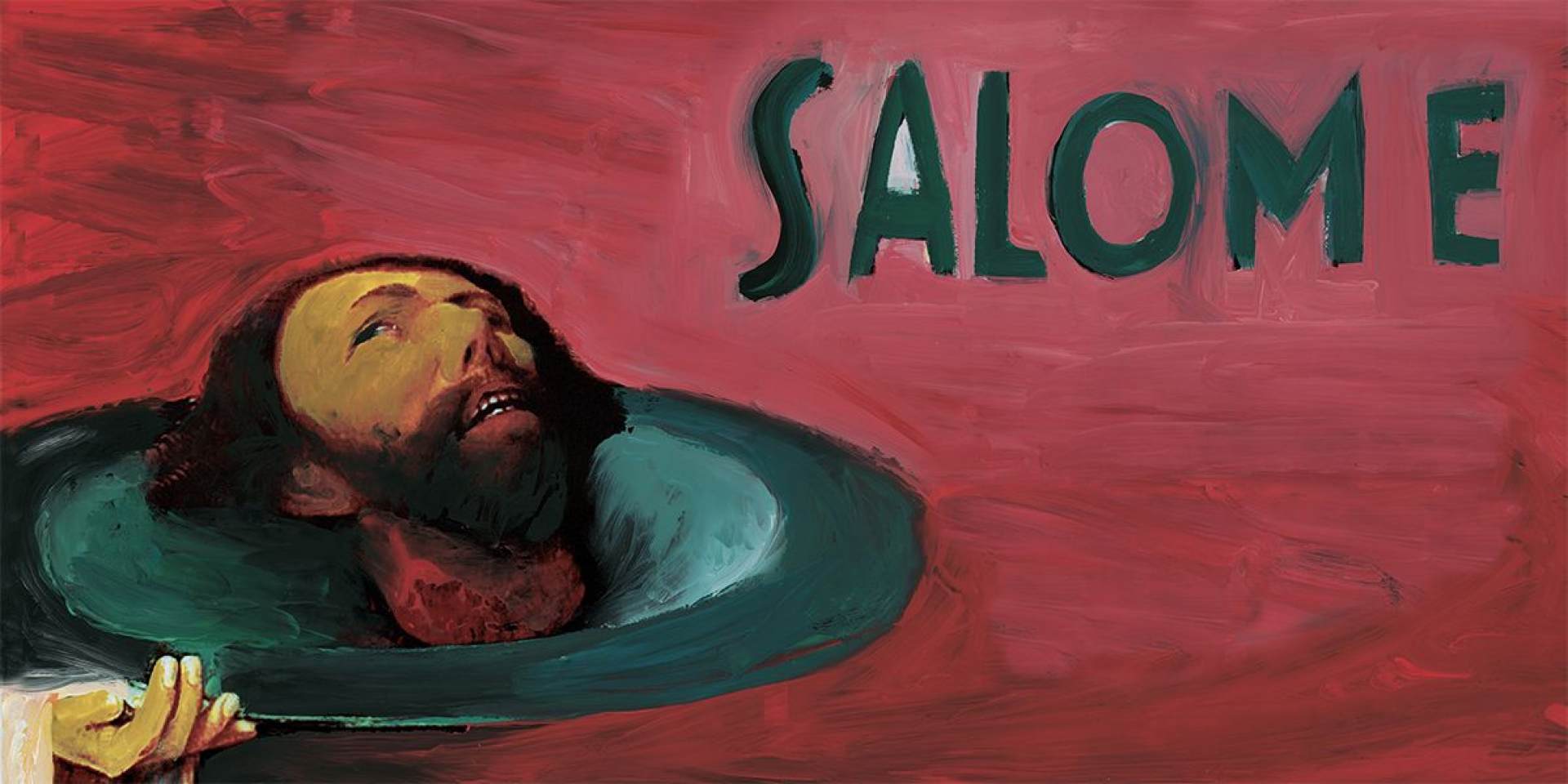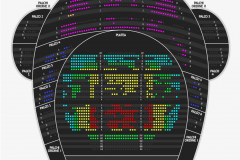Salome
April 2025 | ||||||
|---|---|---|---|---|---|---|
Mo | Tu | We | Th | Fr | Sa | Su |
The 87th Maggio Musicale Fiorentino Festival starts with a new staging of Salome by Richard Strauss, his first operatic masterpiece that established him in the theatrical field: on the podium Alexander Soddy and directed by Emma Dante.
The opera’s debut on 9 December 1905 at the Semperoper in Dresden was met with resounding success, bringing Strauss fame and honour. The literary source was Oscar Wilde’s play Salome, which the composer chose to set to music in Hedwig Bachmann’s German translation. The story takes place at the court of King Herod in Tiberias, where John the Baptist (Jochanaan) is being held prisoner in a cistern. The prophet’s voice attracts Salome, the king’s beautiful stepdaughter, desired by many at court, especially her stepfather, who has a morbid passion for her. The princess, feeling irremediably attracted to Jochanaan, tries in vain to seduce him and after yet another refusal decides to ask Herod for his head, who accepts only after Salome performs a very sensual dance of the seven veils. The girl's desire is thus fulfilled but the horror reaches its peak when Salome, in a necrophilic impulse, kisses the mouth of the beheaded prophet, a gesture for which she will be executed. Wilde's drama had attracted Strauss not only for the audacity of the theme treated, but above all for the presence of such tormented and neurotic characters that would have allowed him to create extreme music, capable of following the violent disturbances of Salome's mind and the turbid thoughts of Herod and his courtiers.
The disorder of the psyche finds a perfect counterpart in a musical score where the mammoth orchestra is involved in a tumultuous vortex of dissonances and where an agitated, hysterical vocality prevails, far from any lyrical impetus.
Synopsis
A great terrace in the Palace of Herod, set above the banqueting hall. Some soldiers are leaning over the balcony. To the right there is a gigantic staircase, to the left, at the back, an old cistern surrounded by a wall of green bronze. The moon is shining very brightly.
Narraboth gazes from a terrace in Herod's palace into the banquet hall at the beautiful Princess Salome; he is in love with her, and apotheosizes her, much to the disgusted fearfulness of the Page of Herodias. The voice of the Prophet Jochanaan is heard from his prison in the palace cistern; Herod fears him and has ordered that no one should contact him, including Jerusalem's High Priest.
Tired of the feast and its guests, Salome flees to the terrace. When she hears Jochanaan cursing her mother (Herodias), Salome's curiosity is piqued. The palace guards will not honor her petulant orders to fetch Jochanaan for her, so she teasingly works on Narraboth to bring Jochanaan before her. Despite the orders he has received from Herod, Narraboth finally gives in after she promises to smile at him.
Jochanaan emerges from the cistern and shouts prophecies regarding Herod and Herodias that no one understands, except Salome when the Prophet refers to her mother. Upon seeing Jochanaan, Salome is filled with an overwhelming desire for him, praising his white skin and asking to touch it, but he rejects her. She then praises his black hair, again asking to touch it, but is rejected once more. She finally begs for a kiss from Jochanaan's lips, and Narraboth, who cannot bear to hear this, kills himself. As Jochanaan is returned to the well, he preaches salvation through the Messiah.
Herod enters, followed by his wife and court. He slips in Narraboth's blood and starts hallucinating. He hears the beating of wings. Despite Herodias' objections, Herod stares lustfully at Salome, who rejects him. Jochanaan harasses Herodias from the well, calling her incestuous marriage to Herod sinful. She demands that Herod silence him. Herod refuses, and she mocks his fear. Five Jews argue concerning the nature of God. Two Nazarenes tell of Christ's miracles; at one point they bring up the raising of Jairus' daughter from the dead, which Herod finds frightening.
Herod asks for Salome to eat with him, drink with him; indolently, she twice refuses, saying she is not hungry or thirsty. Herod then begs Salome to dance for him, Tanz für mich, Salome, though her mother objects. He promises to reward her with her heart's desire—even if it were one half of his kingdom.
After Salome inquires into his promise, and he swears to honor it, she prepares for the "Dance of the Seven Veils". This dance, very oriental in orchestration, has her slowly removing her seven veils, until she lies naked at his feet. Salome then demands the head of the prophet on a silver platter. Her mother cackles in pleasure. Herod tries to dissuade her with offers of jewels, peacocks, and the sacred veil of the Temple. Salome remains firm in her demand for Jochanaan's head, forcing Herod to accede to her demands. After a desperate monologue by Salome, an executioner emerges from the well and delivers the severed head as she requested.
Salome now declares her love for the severed head, caressing it and kissing the prophet's dead lips passionately. Horrified, Herod orders his soldiers, "Kill that woman!" They rush forward and crush Salome under their shields.
Program and cast
RUNNING TIME
1 hour and 40 minutes
ARTISTS
Conductor: Alexander Soddy
Director: Emma Dante
Scenes: Carmine Maringola
Costumes: Vanessa Sannino
Lights: Luigi Biondi
Coreography: Silvia Giuffrè
Maggio Musicale Fiorentino Orchestra
Herodes: Nikolai Schukoff
Herodias: Anna Maria Chiuri
Salome: Allison Oakes
Jochanaan: Iain Paterson
Narraboth: Eric Fennell
Ein Page der Herodias: Marvic Monreal
Funf Juden: Arnold Bezuyen, Mathias Frey, Karl Michael Ebner, Franz Gürtelschmied, Karl Huml
Zwei Nazarener: William Hernandez
Zwei Soldaten: Frederic Jost, Karl Huml
Teatro del Maggio Florence State Opera Italy
Teatro del Maggio is in the centre, close to the old city walls, next to the historic Stazione Leopolda. The garden that welcomes visitors is Piazzale Vittorio Gui, named after the founder of the Stabile Orchestrale Fiorentina and the Maggio Musicale Fiorentino.
By train
Santa Maria Novella is Florence's main train station.
From there you can reach the theatre with a short walk (about 10-15 minutes) or by taking the tram (a stop) or a taxi.
By car
The Opera di Firenze is just outside the ZTL area.
It is possible to park near the Parco delle Cascine or for a fee in the Porta al Prato car park (Via Elio Gabbuggiani, 7) and in the Piazza Vittorio Veneto car park.
By bus
Lines C1, C2 and D (Leopolda stop);
Lines 17 and 23A-B (stop Via delle Carra);
Lines 17B-C, 22, 23N, 23 and 57 (Pierluigi da Palestrina stop);
Lines 29, 29B, 29BA, 29BC, 29D, 30A, 30B, 30AC, 35 and 35° (stop Leopolda - Porta al Prato; Capolinea).
By tram
Line T1 (stop Porta al Prato - Parco della musica).

 EN
EN DE
DE IT
IT FR
FR ES
ES RU
RU JP
JP RO
RO
 Seating plan
Seating plan 